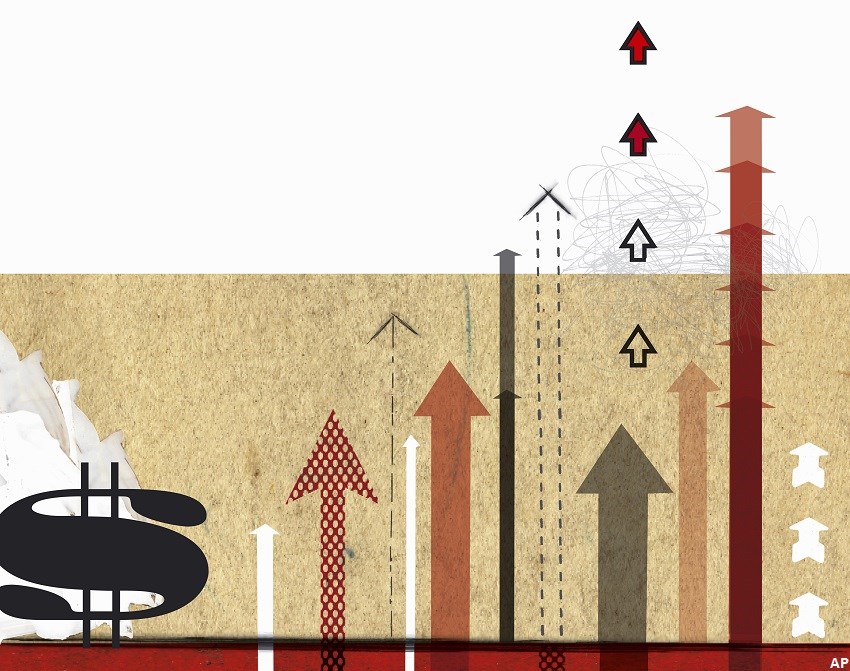
The past few weeks have been volatile, and investors are spooked. However, it is useful to remember that risk, not volatility, is the real enemy.
Versions of a poll like the one below are all over the internet:
As the market has been dropping in recent days, what has been your strategy?
a. Add more money to my account.
b. Hold steady with what I've got.
c. Leave my money in, but be beside myself with worry.
d. Yank my money; I wouldn't be able to stand any more losses.
As Morningstar’s director of personal finance Christine Benz points out though, unfortunately, many risk questionnaires aren't all that productive. “For starters, most investors are poor judges of their own risk tolerance, feeling more risk-resilient when the market is sailing along and becoming more risk-averse after periods of sustained losses like the ones the market has been logging lately. Moreover, such questionnaires send the incorrect message that it's OK to inject your own emotion into the investment process, thereby upending what might have been a carefully laid investment plan,” she explains.
Benz says that as investors, it's helpful to create a mental distinction between volatility and risk. Volatility encompasses the changes in the price of a security, a portfolio, or a market segment both on the upside (see 2019) and for the downside (see 2008). So it's possible to have an investment with a lot of volatility that so far has only gone one way: up. In fact, if you're not selling anytime soon, volatility isn't a problem and can even be your friend, enabling you to buy more of a security when it's at a low ebb. The most intuitive definition of risk, by contrast, is the chance that you won't be able to meet your financial goals and obligations or that you'll have to recalibrate your goals because your investment piggy comes up short. “Through that lens, risk should be the real worry for investors; volatility, not so much,” Benz explains.
With the current market volatility, there are certainly lots of opportunities for investors. Of the 63 Canadian stocks in our coverage universe, 39 are currently trading below our fair value estimates (FVEs). As has been the case for over a year now, the cheapest of these are in cannabis, although none of them have an ‘economic moat’.
A company with an economic moat can fend off competition and earn high returns on capital for many years to come. The Morningstar Economic Moat Rating represents a company's sustainable competitive advantage. A company whose competitive advantages we expect to last more than 20 years has a wide moat; one that can fend off their rivals for 10 years has a narrow moat; while a firm with either no advantage or one that we think will quickly dissipate has no moat.
Today, we decided to look at 9 Canadian stocks that are trading below our fair value estimates, and also have an economic moat. Of the 9, three are in financial services (including a bank!), three are software companies, and three are in different categories. All of the companies have narrow economic moats. Here’s the list:
The cheapest name on the list is CI Financial (CIX) which is trading at nearly half of Morningstar analyst Greg Warren’s fair value estimate. “We believe CI Financial's long-term track record of above-average investment performance had historically served it well as non-bank-affiliated Canadian asset managers came under greater competitive pressures from the Big 6 Canadian Banks. Third-party distributors control most of the distribution in Canada, and CI Financial's long track record of solid fund performance historically allowed it to consistently generate positive annual organic growth, even as its peers struggled with net outflows. That said, 2017-21 served as a reminder of just how difficult the asset management business can be, as performance issues and several institutional clients moving their assets to in-house portfolio management led to year after year of negative organic AUM growth (which averaged negative 4.2% annually the past five calendar years),” Warren says.
While he expects CI Financial to return to form with better fund performance (and positive flows), he likes that the company has been pursuing growth through acquisitions, new products (including actively managed and factor-based ETFs), and an expansion of its advisory and wealth management operations (both internally and through acquisitions). “The additional growth provided by these efforts, and the ever-increasing importance of investment performance as a differentiator, lead us to believe that CI Financial's annual organic growth will eventually return to more normalized levels over time,” he says.
In the meantime, he thinks the road ahead has plenty of hurdles. “One of CI Financial's major weaknesses, in our view, is its heavier reliance on third-party distributors for fund sales and retention, many of which are building up their own manufacturing capabilities. On top of that, we expect the acceptance and growth of index funds and ETFs, and the increased use of fee-based account structures, to put additional pressure on the higher-than-average fee structure that exists in Canada. While we believe CI Financial is better positioned among the purer-play Canadian asset managers we cover, we don't expect it to be immune to these pressures,” he says.




















